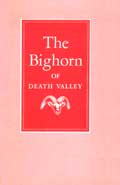.gif)
MENU
![]() Photographs
Photographs
|
Fauna of the National Parks — No. 6
The Bighorn of Death Valley |

|
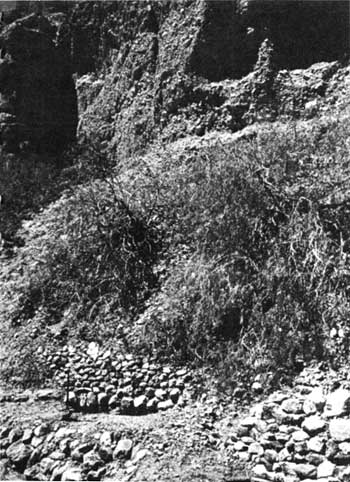
Figure 22.—Lowell Sumner
came to our assistance on the water project and by the end of July 1956
we had made about 75 gallons of water available to the bighorn at Navel
Spring, shown here, and had brought similar supplies to the surface at
Virgin, Scotty's and Hole-in-the-Rock Springs.
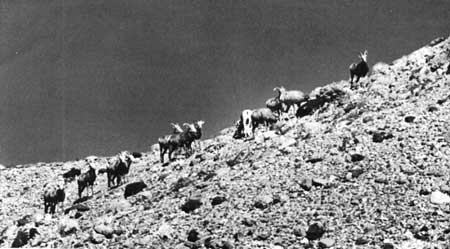
Figure 23.—We began to learn
how specific or how transient the bands may be within the herd. During
the autumn of 1956, Old Mama's band was in three small groups. These
temporarily joined to become a record band of 18. Shown here are 15 of
this group waiting for Old Mama and 2 others (not shown) to join
them.
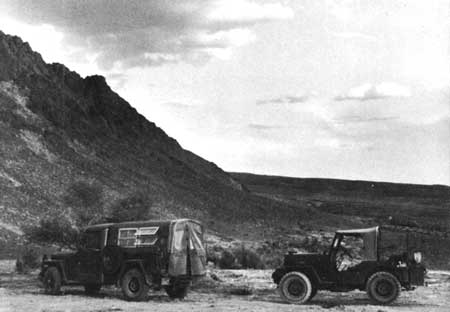
Figure 24.—By the end of the
summer, 1956, we had established our observation camp at Nevares Springs
and had our first glimpse into the preliminary rituals of the rams.
However, we saw no actual ram "fights" until the summer of
1957.
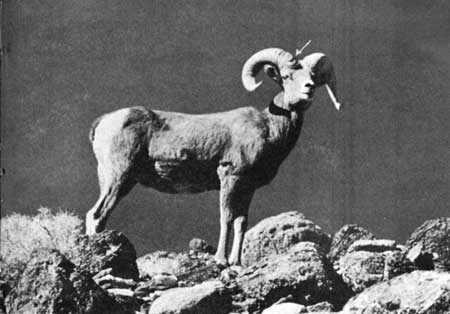
Figure 25.—On August 27,
1957, our field identification study began to gain substance when Tight
Curl arrived at Nevares Spring. We had known him in Furnace Creek Wash
in November 1956 and in upper Echo Canyon in January 1957. His right
horn curls much closer than his left, and both are badly marred at the
frontal base by heavy fighting.
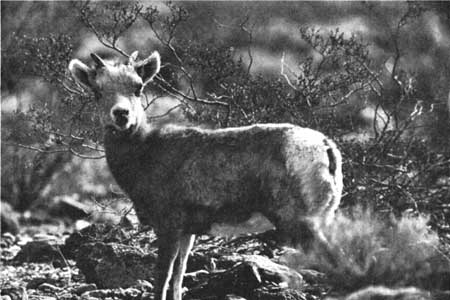
Figure 26.—Two types of
identification. Tight Curl was "positive" because his distinguishing
characteristics could scarcely be duplicated by another ram. But Little
Whitey is a "relative" type. Her white rump and white face, which is
relatively rare, coupled with a peculiar carriage of the head, make her
identification "positive" only as long as she remains in the same
area.
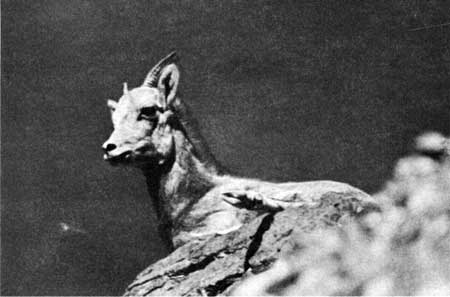
Figure 27.—Some
distinguishing characteristics may be temporary. The lump below the
left ear of the Badwater lamb (Mischief), March 1955, was noticeable for
1 day only, then vanished. This is a "relative" type.
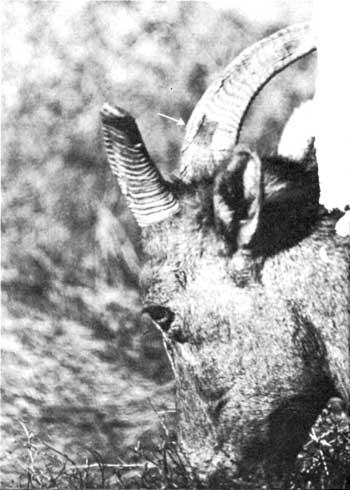
Figure 28.—Old Mama,
observed at Furnace Creek in 1956 and 1957, had a characteristic figure
which could be recognized a mile away with a telescope. Her
"horn-prints" were "positive," the right horn plate being chipped out at
the base on the inside, which is very rare. Her right horn tip is
broomed; her eyes, yellow.
Continued >>>
 Top
Top
Last Modified: Thurs, May 16 2002 10:00:00 pm PDT
http://www.cr.nps.gov/history/online_books/fauna6/faunap3.htm
![]()
